- What to See while Waiting for your Hagia Sophia Tickets
- The Hidden Beauty on the Balcony at the Hagia Sophia in Istanbul
- The Shunned Hidden Crosses in the Hagia Sophia’s Courtyard
- The New Hidden Items in the Hagia Sophia
- A free walking tour around Hagia Sophia
The lineup to buy one’s ticket provides a mini-display of some of the wonders of the Hagia Sophia. The new ticket location sits in front of some crosses, an ancient passageway, and the former museum mosque. So, let’s start the tour while waiting for your Hagia Sophia tickets.
The Exterior Crosses
On the front side of the Hagia Sophia, notice the peaked archways that present a double cross—a design found on many Byzantine archeology objects. The last coat of single-colored paint hid them, but the original design quickly highlighted the cross. Also, above these mounted archways, blackened pillars between the windows showcase possible cross-like support structures on their outer surface. The builders aimed to focus on the cross on the exterior and interior. Also, the shape of the Basilica as a cross-in-square expounds the central theme of Christianity – the sacrificial death of Christ.
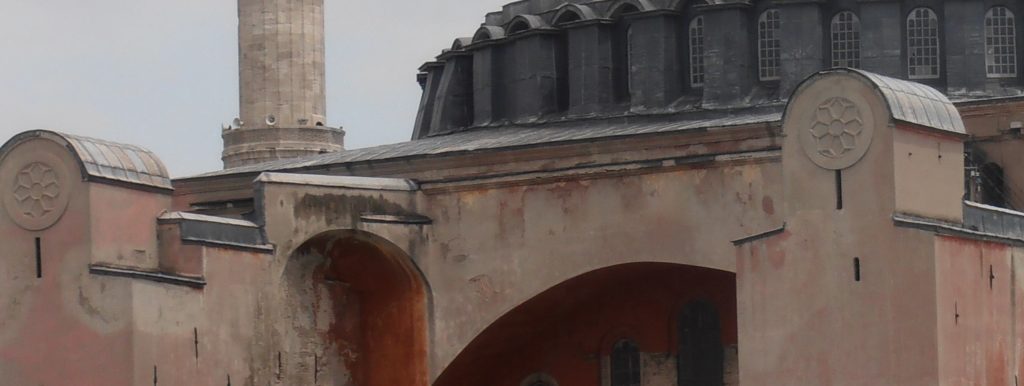
The ancient church was the largest in the world for over 1,000 years until the Seville Cathedral finished its construction in 1506. Ironically, the Seville church was a former mosque location, so its construction could be seen as a form of revenge since the takeover of Hagia Sophia took place in 1453.
My walking tour around the perimeter can be found here.
Exterior Support
While waiting for your Hagia Sophia tickets, notice the support structures added to the building near the 10th century. One can see the original building if one removes all the white-colored constructed supports. Also, you are standing East of the ancient church and Byzantine churches, modeled after Hagia Sophia, orientated southeast to line up with the shortest day of the year directly. So, during the winter equinox, the sunrise would shine directly down the middle of the church.[1]See Nadine Schibille’s Astronomical and Optical Principles in the Architecture of Hagia Sophia in Constantinople.
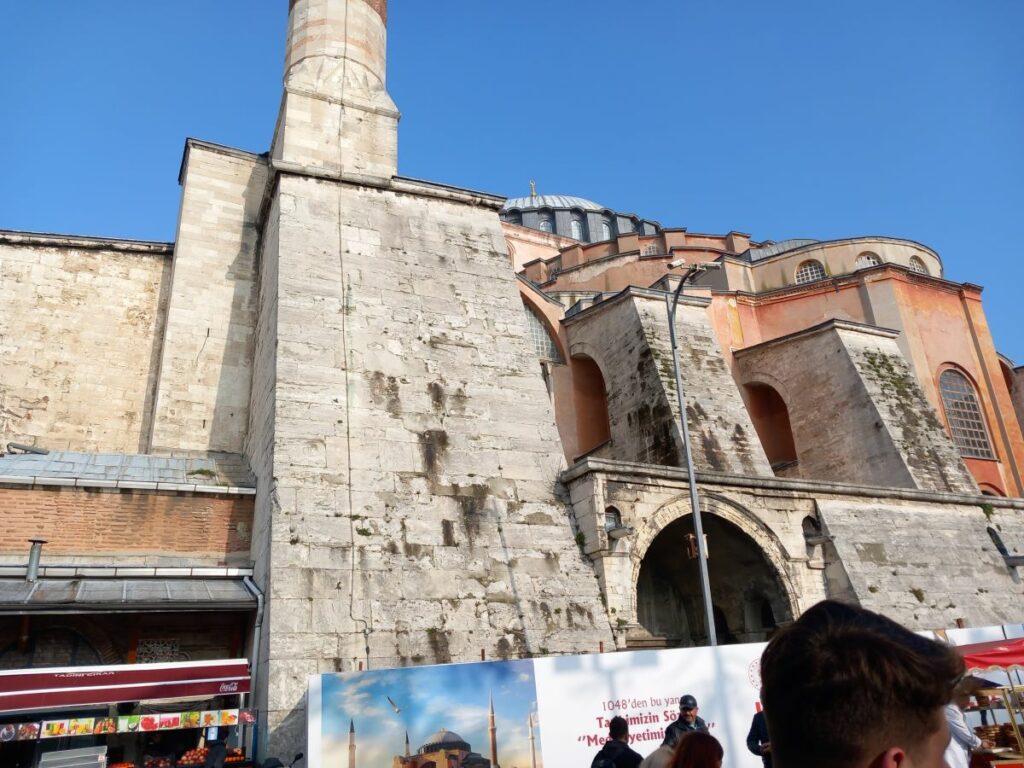
The Byzantine Emperor’s Door
As you stand in line, the site of the Byzantine Grand Palace is on your right behind the high fence and closed area (occupied from the 4th to 11th century). Despite renovations of this location over a dozen years ago and the placement of walkways, the site is left to nature, and no signage labels the former Byzantine palace.
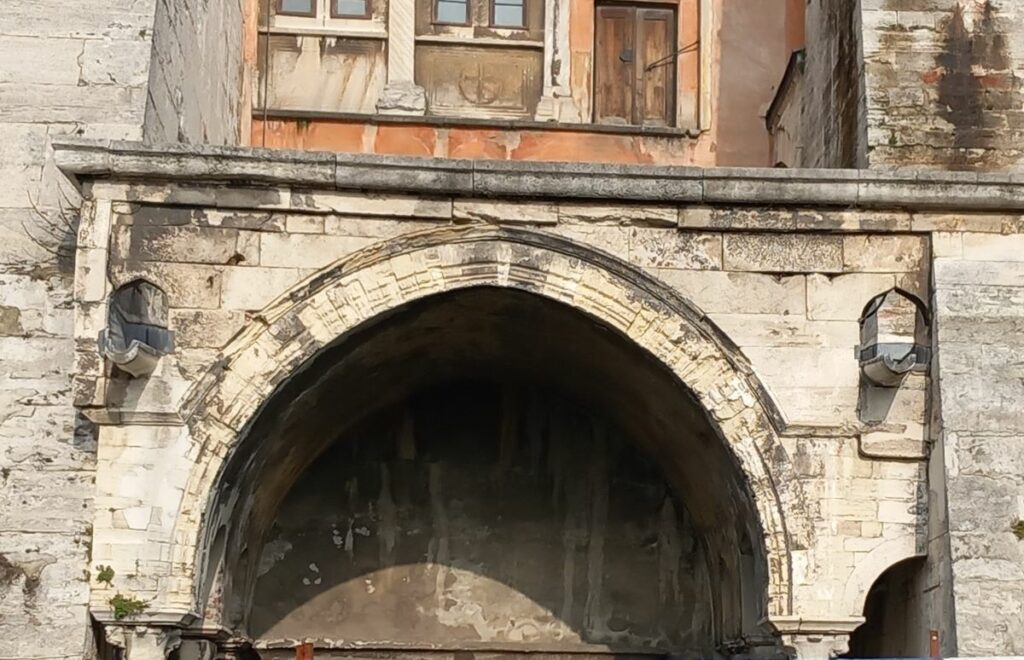
Above the first archway entry marks a key entryway for Byzantine rulers, and above between the exterior support structures is a key wooden door. This area faced the royal Chalke Gate, which entered the Grand Palace. The historian Bob Atchison said, “The Chalke Gate was decorated with bronze and marble sculptures and had huge bronze doors. On the left is the famous elevated passage that led from the Great Palace to the South Gallery of Hagia Sophia. This passage was built by Justinian and was used by the Imperial court.[2]https://www.pallasweb.com/deesis/daily-life-in-constantinople.html So, where you started your lineup was the entryway, and above your head stood a wooden bridge connecting to this doorway. The royal rulers and empresses entered privately into the church from this direction.
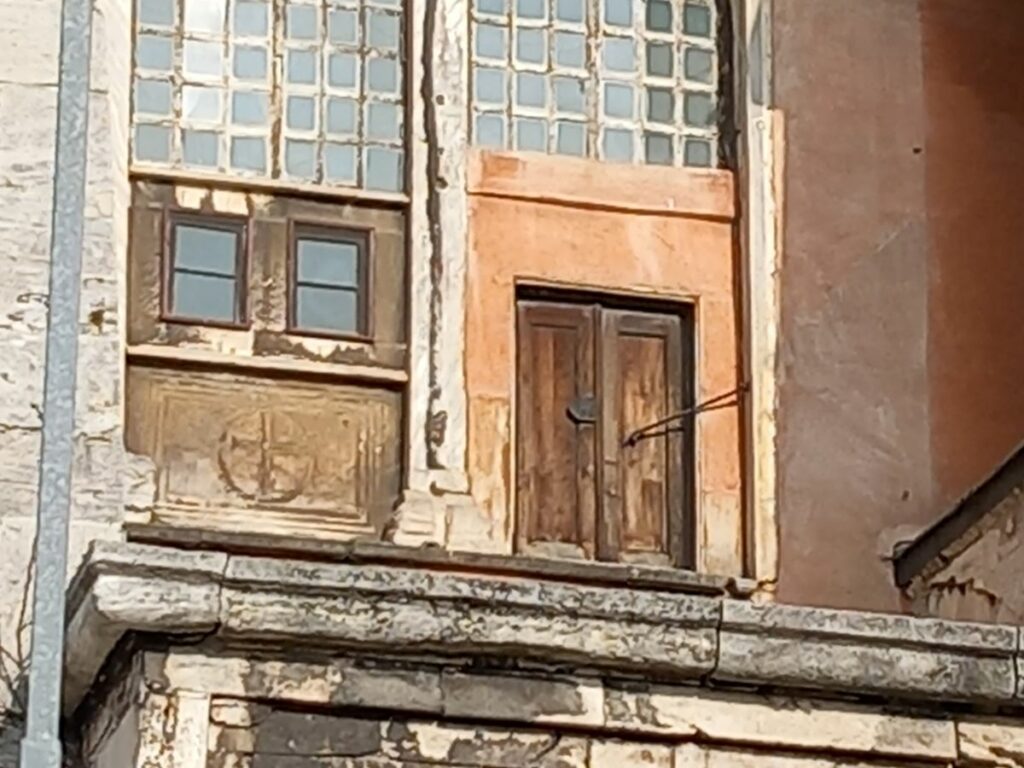
Museum Years’ Mosque
From 1935 to 2020, the Hagia Sophia was a museum. However, for many years, a small mosque was on the grounds that Muslims used. Formerly, the idea that the grounds of Hagia Sophia could not be used for Muslim prayers often ignored the idea that worshipers could use this northeastern building for prayers.
After waiting for your Hagia Sophia tickets, you will pass this area. For many years, a sign graced the side of the door saying, “Hagia Sophia Mosque.” Here is the location below:
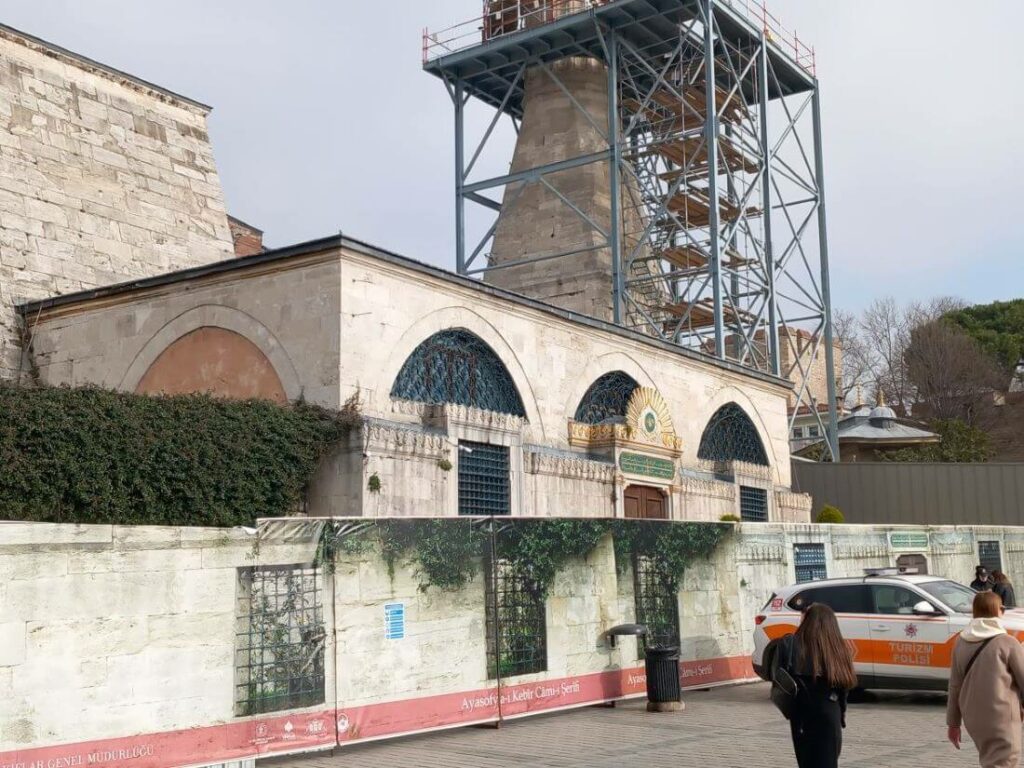
Northeast Stairwell
After security, you will head up the former Museum balcony exit ramp. The ramp, with its rivets on the surface, helped haul construction items to the upper floors of the building.
The door at the bottom connects to the women’s area on the north side of the building.
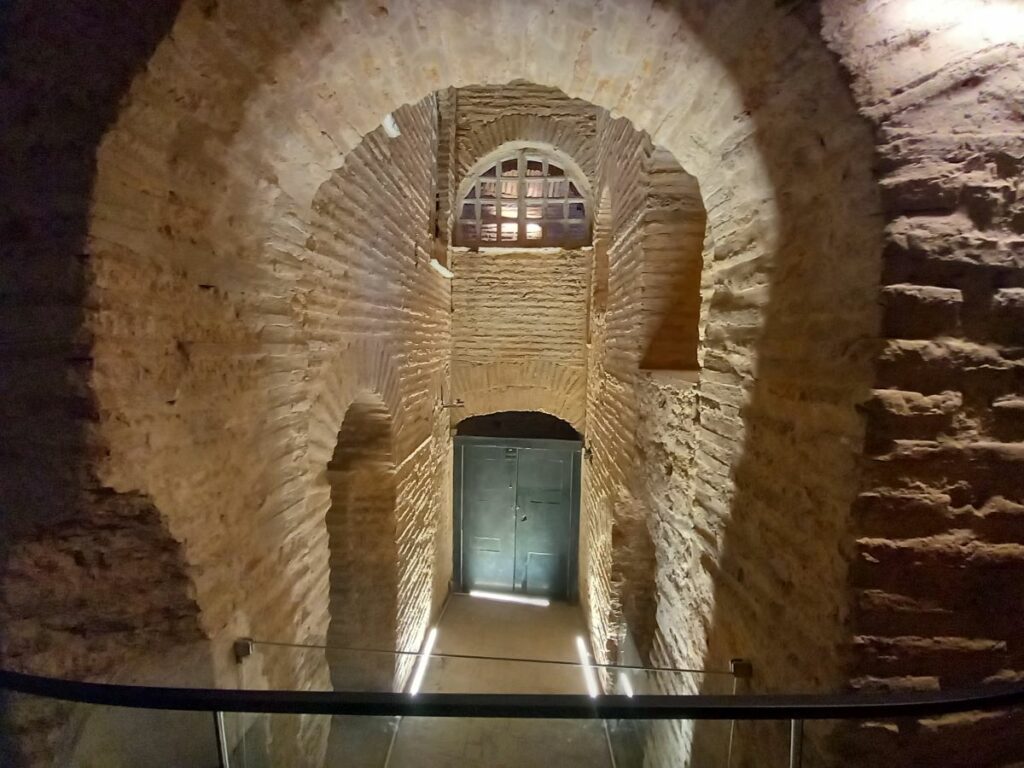
Halfway up the stairwell, on the right, is a tomb area hosting an important religious Byzantine. Facing East and near a possible pre-Christian burial location, this location would honor the deceased. Near this side of the Basilica, the northeastern section was a pre-Hagia Sophia graveyard.[3]Also, a 5th-century burial chamber was found. https://istanbultarihi.ist/690-hagia-sophia Many believe some of the substructure on this side is connected to the second church. However, more evidence displays a Roman hypogeum.[4] https://www.degruyter.com/document/doi/10.1515/opar-2022-0303/html?lang=en This recent historic find is the oldest structure attached to the ancient church. Most likely, it pre-dates the second church, built in 405 AD.
Next, we will look at what can be seen on the second floor.
References
| ↑1 | See Nadine Schibille’s Astronomical and Optical Principles in the Architecture of Hagia Sophia in Constantinople. |
|---|---|
| ↑2 | https://www.pallasweb.com/deesis/daily-life-in-constantinople.html |
| ↑3 | Also, a 5th-century burial chamber was found. https://istanbultarihi.ist/690-hagia-sophia |
| ↑4 | https://www.degruyter.com/document/doi/10.1515/opar-2022-0303/html?lang=en |
Leave a Reply